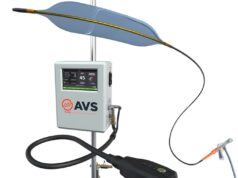 The use of a relatively novel scoring system, referred to as Symptomatic carotid atheroma inflammation lumen-stenosis (SCAIL), has produced favourable predictive qualities versus the Oxford carotid stenosis tool (OCST) and Essen stroke risk score (ESRS). According to researchers, the SCAIL score led to superior recurrent stroke predictions after minor stroke/transient ischaemic attack (TIA) and symptomatic carotid stenosis before revascularisation—as compared to these more established approaches—in a recent study involving three pooled, prospective cohorts of patients.
The use of a relatively novel scoring system, referred to as Symptomatic carotid atheroma inflammation lumen-stenosis (SCAIL), has produced favourable predictive qualities versus the Oxford carotid stenosis tool (OCST) and Essen stroke risk score (ESRS). According to researchers, the SCAIL score led to superior recurrent stroke predictions after minor stroke/transient ischaemic attack (TIA) and symptomatic carotid stenosis before revascularisation—as compared to these more established approaches—in a recent study involving three pooled, prospective cohorts of patients.
Writing in the European Stroke Journal, Sarah Gorey (Stroke Clinical Trials Network Ireland/University College Dublin, Dublin, Ireland) et al note that SCAIL led to discrimination “better than chance”, and provided added value for prognosis when used in conjunction with the clinically based ESRS system. These findings indicate that a combined assessment of stenosis and plaque inflammation on fluorodeoxyglucose positron-emission tomography (FDG-PET) imaging like the one utilised in SCAIL “may improve risk stratification in carotid stenosis”. The authors also stress the need for further studies to fully determine the role FDG-PET could play in evaluating plaque inflammation as a means for patient selection within randomised carotid revascularisation trials of the future.
Gorey and colleagues pooled three prospective cohort studies of patients with recent (<30 days), non-severe ischaemic stroke/TIA (modified Rankin scale [mRS] ≤3) and internal carotid artery stenosis ≥50%, and used these data to compare SCAIL—and its ability to predict ipsilateral stroke recurrence in symptomatic carotid stenosis—with both OCST and ESRS. The researchers detail that all of the included patients had carotid FDG-PET/computed tomography (CT) angiography and late follow-up data, with censoring at carotid revascularisation.
Across a total of 212 included patients, 16 post-PET ipsilateral recurrent strokes occurred in 343 patient years of follow-up—and occurred at a median timepoint of 42 days. Relaying their results, the authors state that baseline SCAIL predicted recurrent stroke with an unadjusted hazard ratio (HR) of 1.96 (confidence interval [CI] 1.2–3.22, p=0.007) and an adjusted HR of 2.37 (CI 1.31–4.29, p=0.004). In contrast, the HR for OCST was 0.996 (CI 0.987–1.006, p=0.49) and for ESRS was 1.26 (CI 0.87–1.82, p=0.23). The concordance (c-statistic) for each of the scoring systems evaluated in the study—with higher numbers indicating better discriminatory power—was 0.66 (CI 0.51–0.80) with SCAIL, 0.52 (CI 0.4–0.64) with OCST, and 0.61 (CI 0.48–0.74) with ESRS.
As per comparisons with ESRS alone, the addition of plaque inflammation measures (maximum standardised uptake value [SUVmax]) to ESRS gave rise to improved risk prediction outcomes when analysed both continuously (HR 1.51, CI 1.05–2.16, p=0.03) and categorically (p=0.005 for risk increase across groups; HR 3.31, CI 1.42–7.72, p=0.006; net reclassification improvement 10%). SUVmax plus ESRS was found to carry an adjusted HR of 1.57 (CI 1.04–2.36, p=0.03), and stratified recurrent stroke risks were low in 2.6% of patients, moderate in 5%, and high in 17.3%. However, Gorey et al report that their recurrent stroke prediction findings were unchanged by the further addition of carotid lumen stenosis measures—the other metric taken into consideration, alongside plaque inflammation, by SCAIL.
“The SCAIL score has demonstrated validity to predict early and late recurrent stroke,” the authors add. “In our study, SCAIL improved identification of patients with recurrent stroke when directly compared to established clinical risk scores. However, SCAIL correctly classified just over half of [the] patients in our study, and the addition of clinical variables in the ESRS provided only modest further improvements. Prediction models including measures of vascular inflammation—either alone or in combination with clinical risk factors—need to be further refined and validated before they can be applied in clinical practice for patient selection for carotid revascularisation.”













